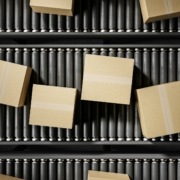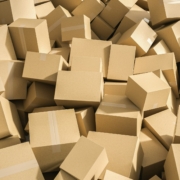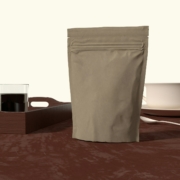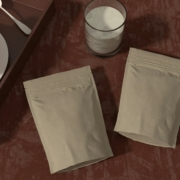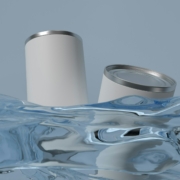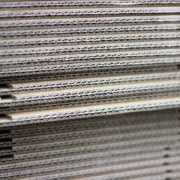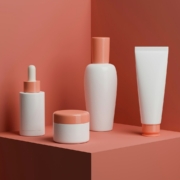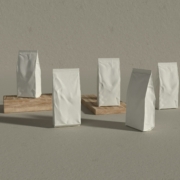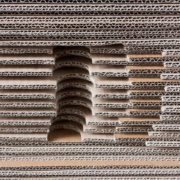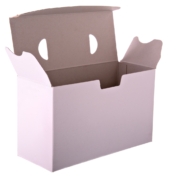Driving Brand Value with Custom Packaging: Overcoming Common Pitfalls
Custom packaging plays a significant role in how people see your brand. It’s more than just a box or a bag; it’s the first thing customers see when they get your product. Good packaging makes a solid first impression. It can make your product stand out and feel unique to the customer, boosting your brand.
This article will help you understand how to use custom packaging to make your brand stronger. We will talk about some common mistakes and how to avoid them. By the end, you’ll know how to create great packaging that works well and helps your brand succeed.
Understanding the Role of Custom Packaging in Brand Value
Custom packaging is a powerful tool for building your brand’s value. It’s the first thing customers see and touch, making it a crucial part of their experience with your product. A well-designed package can set a positive tone and create anticipation for what’s inside. It conveys quality and care, signalling that the product is worth the investment.
The packaging also reflects your brand’s identity. Your chosen colours, logos, and materials should match your brand’s message and values. For instance, eco-friendly packaging can show your commitment to sustainability, appealing to environmentally conscious customers. Unique, eye-catching designs can make your product stand out on the shelf, attracting more attention and encouraging sales.
Additionally, custom packaging can enhance the customer experience. Thoughtful details, like easy-to-open designs or reusable parts, add value and make the package more memorable. Customers with a positive unboxing experience are more likely to remember and talk about your brand, spreading the word to friends and family.
Identifying Common Packaging Pitfalls
Creating custom packaging can be tricky, and mistakes are easy to make. One common pitfall is using low-quality materials. Weak materials can make the package look cheap and might not protect the product well during shipping, leading to damaged goods and unhappy customers.
Another mistake is overcomplicating the design. While it’s important for packaging to be attractive, adding too many elements can make it hard to read and understand. Cluttered designs can confuse customers and distract them from the main message you want to convey. Keep it simple and focus on clear, impactful visuals.
Ignoring the practical aspects of packaging can also be a problem. For example, not considering how the package will be stored or shipped can lead to issues. Packages that are too large, heavy, or oddly shaped can be costly to transport and store. They might also be inconvenient for customers, impacting their overall experience.
Lastly, forgetting about sustainability can be a big mistake. Many customers today care about the environment and prefer packaging that’s recyclable or made from recycled materials. Using non-recyclable or excessive packaging can turn these customers away and harm your brand’s image.
Avoiding these common pitfalls ensures that your custom packaging enhances your brand and provides a positive experience for your customers.
Effective Strategies to Enhance Packaging Design
Enhancing packaging design involves creativity and strategic thinking. One effective strategy is to understand your target audience. Knowing who will buy your product helps design packaging that is appealing to them. For example, bright colours and fun designs attract kids, while sleek and straightforward styles appeal to adults.
Using high-quality images and graphics is also essential. Clear, sharp visuals make the packaging look professional and appealing. Ensure that your brand’s logo is prominently placed and easily recognisable. This boosts brand recognition and helps customers spot your products quickly.
Consider these tips to enhance packaging design:
- Minimalist Design: Sometimes, less is more. Clean, uncluttered designs often look more sophisticated and are easier to produce.
- Functional Features: Add practical elements like handles, resealable parts, or easy-open tabs. These features improve user experience and make the product more convenient.
- Eco-Friendly Materials: Use recyclable or biodegradable materials. This will appeal to environmentally conscious consumers and boost your brand’s image.
- Consistent Branding: Keep your design elements consistent across all packaging. This creates a cohesive brand look and builds recognition.
Focusing on these strategies can help you create packaging that is appealing, practical, and aligned with your brand’s values.
Benefits of Investing in Quality Packaging Solutions
Investing in quality packaging solutions provides numerous benefits for your brand. Firstly, good packaging protects your product during transit and storage. This reduces the risk of damage and ensures that customers receive their items in perfect condition, leading to higher satisfaction and fewer returns.
Quality packaging also boosts your brand’s image. High-end materials and professional designs communicate that you care about your product and customers. This can attract more buyers and build trust in your brand.
Here are additional benefits of quality packaging:
- Brand Differentiation: Unique, attractive packaging sets your product apart from competitors on the shelf. It catches the eye and encourages buyers to choose your product over others.
- Enhanced Perceived Value: Well-designed packaging can make a product look more valuable, justifying a higher price point and improving profit margins.
- Customer Loyalty: Customers who have a great experience with your packaging are more likely to become repeat buyers. Positive first impressions can turn into long-term loyalty.
- Sustainability: Using eco-friendly packaging solutions meets the growing demand for sustainable products. This can enhance your brand’s reputation and appeal to a broader market.
Investing in quality packaging pays off by protecting your products, enhancing your brand, and delighting your customers.
Conclusion
Driving brand value with custom packaging involves understanding its role, avoiding pitfalls, enhancing design, and investing in quality solutions. Thoughtful packaging makes your product stand out and improves customer satisfaction. When done right, it showcases your brand’s identity and values.
Focus on quality materials and practical features. These choices can create a memorable unboxing experience. Simple, effective designs make your products more attractive and convenient. Additionally, considering eco-friendly options can elevate your brand’s image.
For expert custom packaging solutions, reach out to Star Stuff Group. Let us help you create packaging that boosts your brand’s value and impresses your customers. Contact us today to start your journey towards outstanding packaging.

